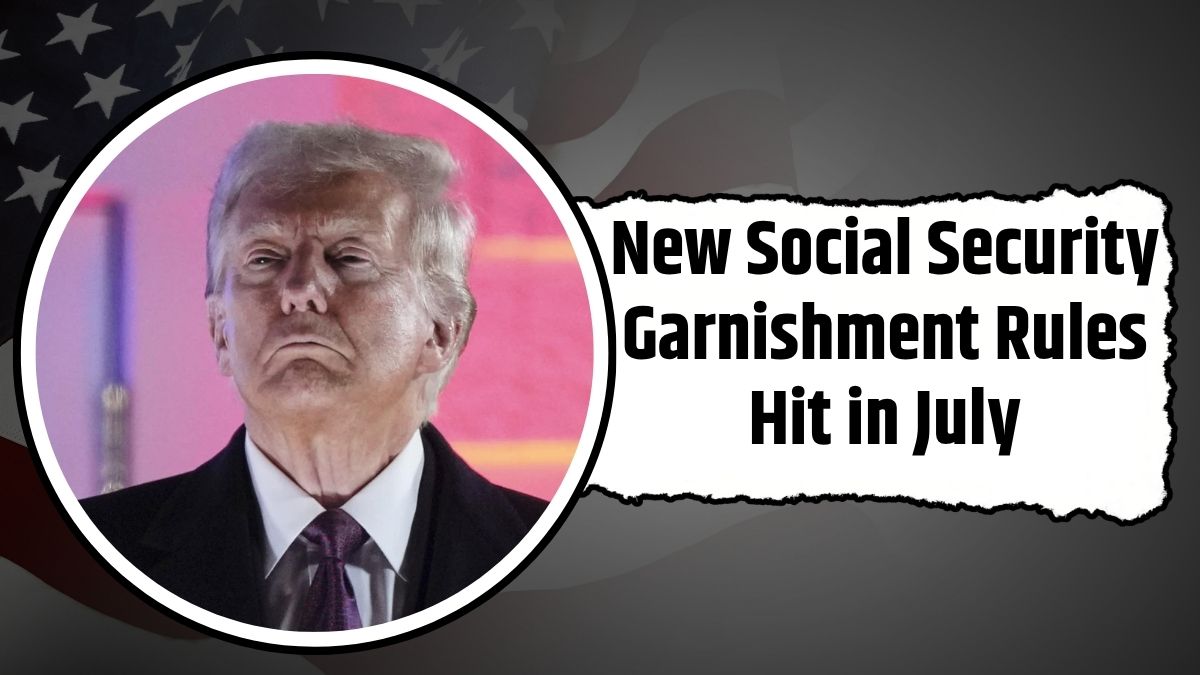Social Security Garnishment is dominating headlines this month—and for good reason. Starting July 24, 2025, over 1 million Americans could see their monthly benefits reduced by up to 50%. For individuals living on a fixed income, this isn’t just a policy shift—it’s a potential financial crisis.
Whether you’re a retiree, disabled worker, or survivor beneficiary, understanding this garnishment policy and taking action now can make the difference between financial stability and hardship. Here’s a clear breakdown of the new rules, who’s affected, and what steps you can take to protect your Social Security income.
What Is Social Security Garnishment?
Social Security Garnishment refers to the government’s authority to deduct money from your monthly benefits if the Social Security Administration (SSA) claims you were overpaid. These deductions are set to begin July 24, 2025, as part of a larger push to recover $23 billion in overpayments issued in recent years.
While some overpayments stem from errors by the SSA, others result from unreported life changes such as returning to work, marriage, or moving without proper notification.
Overview of the New Garnishment Policy
Here’s what’s changing and why it matters:
| Policy Detail | Information |
|---|---|
| Start Date | July 24, 2025 |
| Total Impacted | Over 1 million Social Security beneficiaries |
| Monthly Deduction Rate | Up to 50% of benefits in some cases |
| Target Recovery Goal | $23 billion in overpayments |
| Who Is Affected | Retirees, disabled individuals, and survivors |
| Action Required | Must respond to SSA notices or risk garnishment |
If you’ve received a notice from the SSA or suspect you’ve been overpaid, your next steps are critical.
Why This Is Happening Now
The SSA launched this initiative after audits revealed billions in unrecovered overpayments—many dating back years. These were caused by:
- SSA processing errors
- Unreported income increases
- Life changes like marriage, divorce, or relocation
- Late or missing updates to the SSA regarding eligibility
In some cases, people had no idea they were being overpaid until they were hit with a collection letter months—or even years—later.
Who Is Most at Risk?
The garnishment policy will impact a wide range of people, particularly:
- Retirees relying solely on Social Security for income
- Disabled workers whose work status changed or income went unreported
- Survivor beneficiaries receiving funds from a deceased loved one’s record
If you fall into one of these groups and have received a garnishment notice, the time to act is now.
What Happens If You Don’t Respond
If you fail to reply to the SSA’s notices by July 24, they may begin withholding up to 50% of your monthly benefit. This reduction could remain in place until the full overpayment is repaid—unless you take action.
How to Respond Before Garnishment Begins
Here’s how you can protect your Social Security income:
1. Read Every Notice from SSA
Carefully review any recent letters from the SSA. Look for keywords like “overpayment,” “collection,” or “adjustment.”
2. File for a Waiver
If you believe the overpayment wasn’t your fault and repaying it would cause financial hardship, you may apply for a waiver.
3. Request a Reconsideration
Think the SSA made a mistake? You can challenge the debt by requesting a reconsideration and submitting supporting documents.
4. Negotiate a Lower Garnishment Rate
If your budget can’t handle the standard deduction, submit proof of income, rent, medical expenses, or other financial hardships to request a reduced withholding rate.
5. Get Legal or Financial Help
A Social Security advisor or attorney can help you navigate forms, appeals, and waiver procedures. Acting with expert support improves your chances.
Common Reasons for Overpayment
Wondering how an overpayment might have happened? Common causes include:
- Returning to work and earning more than allowed without reporting it
- SSA miscalculations during the application or review process
- Failure to report marital status changes
- Changes in living arrangements or dependents
- Delays in updating your address or income details
Often, these errors go unnoticed—until the SSA issues a debt notification.
What If Garnishment Has Already Started?
Even if the deductions have begun, you still have options:
- Submit a waiver or reconsideration immediately
- Request a temporary stop to collections while your appeal is reviewed
- Provide updated financial hardship documentation to lower your garnishment rate
Delays can hurt your chances, so respond as quickly as possible—even after deductions begin.
This Isn’t Just About You—It’s a National Shift
The SSA isn’t just collecting on old debts—it’s reforming its payment system. Beginning April 2025, the agency ramped up internal efforts to flag overpayments and automate deductions. By July 24, enforcement becomes widespread.
While the goal is to reduce fraud and restore accountability, critics argue the sudden enforcement lacks compassion—especially for low-income seniors and disabled Americans.
How to Stay Ahead
If you’re receiving Social Security payments, now’s the time to:
- Log into your SSA account at SSA.gov and check for alerts
- Confirm your benefit amounts and verify recent updates
- Respond immediately if you receive a debt notice
- Keep all your personal information up to date with the SSA
Proactive steps can help avoid sudden garnishments and protect your household finances.
FAQs
Q1. When does garnishment begin?
It starts July 24, 2025, with up to 50% of monthly benefits deducted in some cases.
Q2. Can I stop it before it begins?
Yes. File a waiver or appeal before the deadline to pause or prevent garnishment.
Q3. What proof do I need for a waiver?
Documents showing financial hardship, such as medical bills, rent, or low income, can strengthen your case.
Q4. Will everyone be affected?
No. Only individuals flagged for overpayments according to SSA records are impacted.
Q5. Can I negotiate how much is taken out?
Yes. Submit documentation to request a lower deduction rate based on your financial condition.










